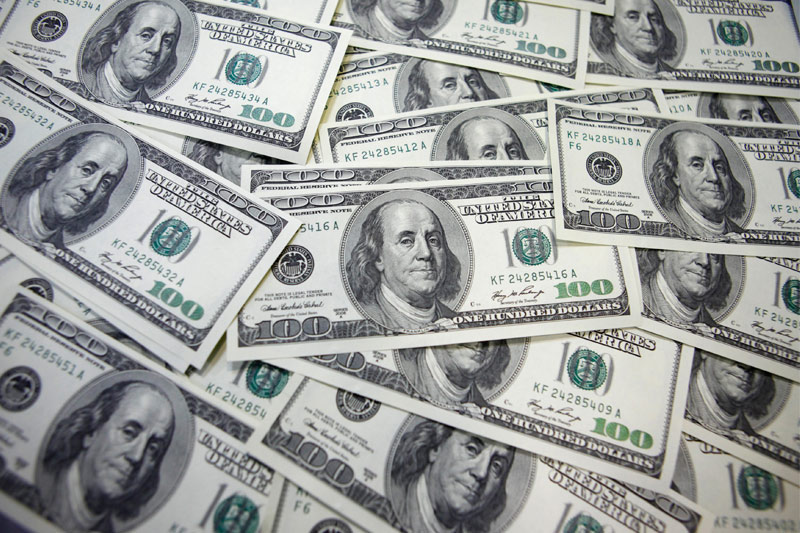 The dollar continued to lose ground
The dollar continued to lose groundInvesting.com – The dollar continued to lose ground in morning trading in Asia Thursday, hours after the U.S. Federal Reserve moved to raise interest rates and China followed suit. The dollar was also pressured by fears of a trade war, with U.S. President Donald Trump all but set to announce a new set of tariffs against China.
The that tracks the greenback against a basket of six major currencies dropped to 89.13 at 11:21 ET (03:21 GMT), down 0.13%. The dollar continued to slide despite a move by the US Federal Reserve raising interest rates at its meeting on Wednesday, March 21.
The Federal Open Market Committee (FOMC) raised its benchmark interest rate target range 0.25% to between 1.5% and 1.75%, which puts the effective funds rate at about 1.63%, the highest level since 2008. In raising the rate, the Fed noted that “the economic outlook has strengthened in recent months.” However, the Fed did not indicate that it was likely to raise rates four times this year and kept inflation forecasts steady.
Adding to the pressure on the dollar was the expectation that Trump would announce on Thursday a new set of tariffs against $50 billion of Chinese imports, particularly in the high-technology sector. The new tariffs follow an investigation by the US Trade Representative (USTR) into Chinese trade practices. The investigation suggested state-led efforts in China to force US companies to disclose intellectual property.
In Mainland China, the People’s Bank of China (PBOC) raised its own short-term market interest rates Thursday morning in Asia, following the US Fed’s move. The PBOC raised rates on reverse repurchase agreements by five basis points to 2.55%. The PBOC also pumped about $1.58 billion into the economy via seven-day reverse repos.
The pair was down 0.13% at mid-morning in Asia, with the Chinese yuan trading at 6.3173. The PBOC set the fix rate for the yuan against the dollar at 6.3167 on Thursday, compared to 6.3396 on Wednesday.
The Japanese yen, for its part, rose against the dollar. The pair shed 0.34% to 105.69, marking a continuation of a strengthening of the yen against the greenback as a refuge against risk but also thanks to a commitment by the Bank of Japan (BOJ) to keep an ultra-loose monetary policy.
BOJ’s deputy governor Masayoshi Amamiya garnered some attention on Wednesday when he said the BOJ has not ruled out adjusting the yield curve even before inflation reached the 2% target which Governor Haruhiko Kuroda said policy normalisation is still far away.
The pair traded at 0.7742, down 0.0023%, giving up some gains from the fay earlier. The Australian Bureau of Statistics (ABS) reported a surge in jobs on Thursday morning. Employment increased by 17,500 in seasonally adjusted terms during February, less than the expected increase of 20,000 but the 17th consecutive month of growth.
Fusion Media or anyone involved with Fusion Media will not accept any liability for loss or damage as a result of reliance on the information including data, quotes, charts and buy/sell signals contained within this website. Please be fully informed regarding the risks and costs associated with trading the financial markets, it is one of the riskiest investment forms possible.
Read Again Forex - Dollar Down After Fed Decision and Likely China Tariffs : http://ift.tt/2G0Bg4F
Bagikan Berita Ini















0 Response to "Forex - Dollar Down After Fed Decision and Likely China Tariffs"
Post a Comment